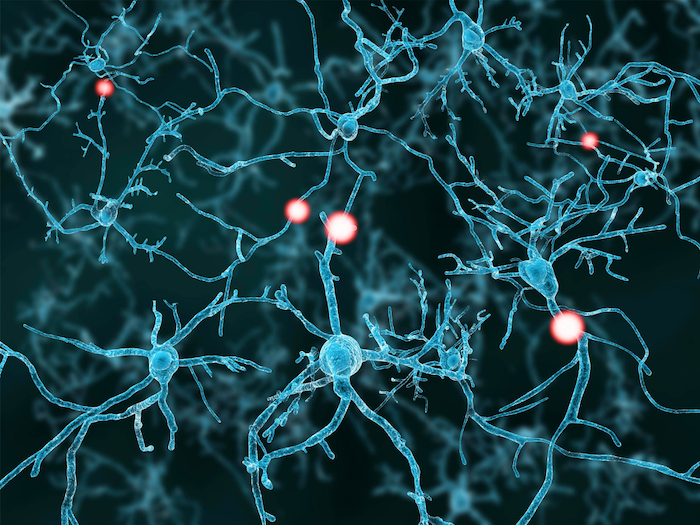Mosaic Cas Mutations and Scarlet Gene Effects Revealed
As the frontier of genomic engineering continues to expand, scientists persistently seek to harness the power of CRISPR technologies beyond traditional model organisms. While CRISPR-Cas systems have revolutionized gene editing in established species, applying these tools effectively in emerging model organisms remains fraught with challenges. Among these, the efficiency of generating heritable mutations and deciphering […]


As the frontier of genomic engineering continues to expand, scientists persistently seek to harness the power of CRISPR technologies beyond traditional model organisms. While CRISPR-Cas systems have revolutionized gene editing in established species, applying these tools effectively in emerging model organisms remains fraught with challenges. Among these, the efficiency of generating heritable mutations and deciphering the nuanced consequences of DNA damage induced by CRISPR nucleases are particularly pressing. In a groundbreaking study published in Heredity in April 2025, a team of researchers led by Xu, Neupane, and Wang has made significant strides in overcoming these obstacles, focusing on the microcrustacean Daphnia pulex—an emerging model organism that offers unique insights into ecological and evolutionary genomics.
One of the pivotal advances presented in their work lies in the reengineering of the microinjection delivery method, which is critical for introducing CRISPR components into early-stage embryos of Daphnia pulex. Traditional microinjection methods have struggled with inconsistent delivery efficiency, often resulting in mosaicism or incomplete genome editing that complicates downstream analyses. By systematically refining microinjection parameters—ranging from needle calibration to injection timing—the team achieved markedly improved biallelic editing efficiencies with both Cas9 and Cas12a nucleases. This enhancement not only accelerates the establishment of stable mutant lines but also sets a technical benchmark for manipulating similar emerging models.
Delving deeper into the editing dynamics, the researchers explored how Cas9 and Cas12a nucleases operate within the scarlet gene locus of Daphnia pulex, which serves as a visually tractable marker due to its role in pigmentation. Their findings revealed that DNA cleavage events predominantly occur in a stepwise manner rather than simultaneously, a temporal pattern that influences the types of mutations introduced. This kinetic insight is crucial, as stepwise cleavage might underpin the generation of varied indel profiles observed in the edited locus, thereby affecting phenotypic outcomes and heritability.
The mutation spectrum itself was extensively characterized. While small insertions and deletions (indels) were the most common consequence of CRISPR-induced DNA breaks, the study unexpectedly identified rare but large deletions exceeding 1 kilobase directly at the target site. These large-scale deletions suggest that CRISPR-mediated double-stranded breaks can sometimes lead to complex repair outcomes, possibly involving microhomology-mediated end joining or replication-based mechanisms. Such insights prompt a reevaluation of assumptions about the fidelity and predictability of CRISPR editing, urging the scientific community to consider broader genomic consequences when interpreting mutant phenotypes.
Equally striking was the comprehensive genome-wide analysis conducted to detect off-target mutations, a perennial concern in CRISPR applications. Remarkably, the study reported no detectable off-target events across the Daphnia pulex genome upon using either Cas9 or Cas12a, underscoring the high specificity of these nucleases when coupled with meticulous guide RNA design and delivery methods. This finding not only bolsters confidence in using CRISPR safely in non-traditional species but also underscores the importance of sequencing-based validation in off-target assessments.
Beyond knockout experiments, the team demonstrated successful knock-in of a stop codon cassette into the scarlet locus, a technically challenging feat marked by complex surrounding mutations. Achieving knock-in in an emerging model organism is a critical milestone, enabling precise gene function interrogation and the modeling of disease-associated mutations. The integration of this cassette, despite local genomic complexity, attests to the robustness of their delivery and repair strategy, paving the way for sophisticated genomic manipulations in Daphnia pulex.
A remarkable aspect of this research is the extensive germline mosaicism observed in certain mutants. Mosaicism, arising from incomplete or delayed editing events during early development, presented itself as varying phenotypes and genotypes among asexual progeny originating from a single mutant founder. This phenomenon complicates the interpretation of genotype-phenotype correlations but also opens intriguing avenues for studying somatic versus germline mutation propagation and the evolutionary implications of mosaicism in clonal reproduction systems.
The transcriptomic investigation into scarlet knock-out mutants uncovered widespread gene expression alterations, signifying the pleiotropic nature of this gene beyond its classic pigmentation role. Among the affected pathways, genes implicated in neural function and behavior were notably dysregulated, correlating with the observed altered swimming behaviors in mutants. Such behavioral phenotyping, linked with transcriptome-wide changes, illuminates previously unappreciated intersections between pigment-related genes and neurological processes in Daphnia pulex.
Most intriguingly, several dysregulated genes in the scarlet mutants have human homologs associated with neurodegenerative disorders, suggesting that Daphnia pulex could serve as a valuable model for exploring conserved molecular pathways pertinent to human neurological disease. This cross-species relevance accentuates the potential of Daphnia pulex as a bridge between evolutionary biology and biomedical research, especially in the realm of neurobiology and aging.
Technically, the dual application of Cas9 and Cas12a nucleases revealed subtle differences in editing profiles and efficiencies, offering researchers strategic options depending on experimental goals. Cas12a’s staggered cut pattern and its distinct PAM requirements expand the editable genomic landscape, whereas Cas9’s established and well-characterized mechanism suits straightforward knockout designs. The authors’ comparative approach provides a roadmap for selecting the optimal nuclease system tailored to specific questions in emerging model research.
The study also addresses the complex interplay between different DNA repair pathways active in Daphnia pulex, which influence the landscape of mutations generated post-CRISPR cleavage. The predominance of indels suggests a reliance on non-homologous end joining (NHEJ), but occurrences of large deletions point towards alternative pathways or aberrant repair events. Parsing these mechanisms holds significance for future genome engineering endeavors, particularly in enhancing the predictability and precision of editing outcomes.
Mosaicism identified at the germline level underscores biological complexities inherent in CRISPR editing in multicellular organisms undergoing asexual reproduction. This emphasizes the need for longitudinal genetic screenings across generations to fully characterize mutant lines. Such diligence reduces the risk of confounding results in experimental studies and highlights the evolutionary relevance of mosaicism in shaping population genetic diversity.
From a methodological standpoint, the study’s integration of genomics, transcriptomics, and phenotypic assays exemplifies a holistic approach to characterizing CRISPR edits in an emerging model. This comprehensive framework not only strengthens conclusions but also sets a standard for rigorous gene editing validation, facilitating reproducibility and translatability across diverse model systems.
Ultimately, the work of Xu and colleagues represents a landmark in the functional genomics of Daphnia pulex, illuminating both technical pathways to efficient genome editing and the biological intricacies emerging from CRISPR interventions. Their findings resonate broadly across evolutionary biology, neurogenetics, and genetic engineering fields, promising to catalyze future research that leverages Daphnia‘s unique biology as a window into complex gene function and disease modeling.
As the field advances, these discoveries herald a new era where the fusion of refined molecular tools and emerging model organisms will deepen our understanding of gene function, developmental biology, and the genomic underpinnings of behavior. The mosaicism of Cas-induced mutations and the pleiotropic effects of genes such as scarlet only scratch the surface of the rich genetic landscapes awaiting exploration through CRISPR in novel biological systems.
Subject of Research:
CRISPR-mediated genome editing efficiency, mutation dynamics, and transcriptomic consequences in the emerging model organism Daphnia pulex.
Article Title:
The mosaicism of Cas-induced mutations and pleiotropic effects of scarlet gene in an emerging model system.
Article References:
Xu, S., Neupane, S., Wang, H. et al. The mosaicism of Cas-induced mutations and pleiotropic effects of scarlet gene in an emerging model system.
Heredity 134, 221–233 (2025). https://doi.org/10.1038/s41437-025-00750-4
Image Credits:
AI Generated
DOI:
April 2025
Tags: biallelic editing improvementsCas9 and Cas12a nucleases efficiencychallenges in gene editing applications.CRISPR gene editing in emerging model organismsCRISPR technologies in non-traditional speciesDaphnia pulex genome engineeringecological genomics advancementsevolutionary genomics researchheritable mutations in microcrustaceansmicroinjection methods for CRISPRmosaicism in genome editingrefining CRISPR delivery techniques
What's Your Reaction?

































